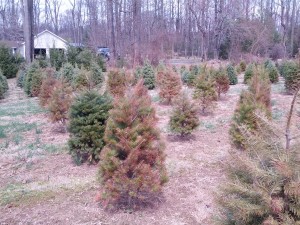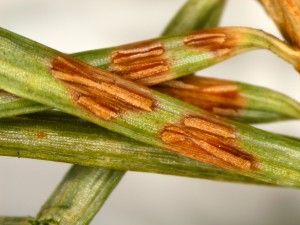Buds of many confiers, including Douglas-fir, are in the process of breaking around the state. Every spring around this time, the Plant Diagnostic Laboratory starts to get samples with suspect needlecast, and as usual, we have indeed seen our share of needlecast so far this spring.
Swiss needlecast seems to be the most common submission lately, but we are also getting plenty of Rhabdocline needlecast. Just so you know, the samples are starting to arrive in the lab with very active Rhadocline infections.
A close look (use a hand lens) at the undersides of needles on suspect trees will reveal lesions that are erupting with fungal fruiting bodies. The fungus is spewing its spores right on schedule and just in time for budbreak and the shoot elongation period. All we need now is some wet weather to complete the disease triangle. Preventive fungicide treatments (before wet weather) to protect the succulent new growth are the best (only) way to control needlecasts in production fields. Remember, good coverage (top to bottom and side to side) is essential. If you have not done so already, crank up your spray rigs, because now is the time to act!



